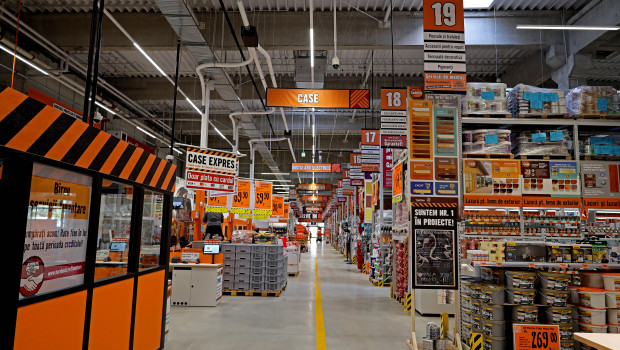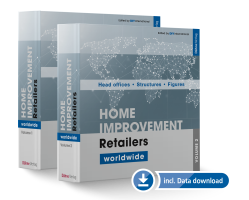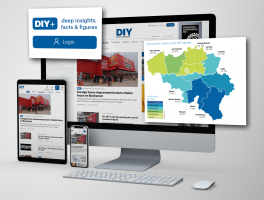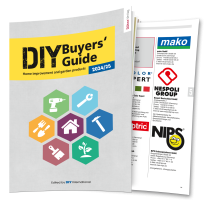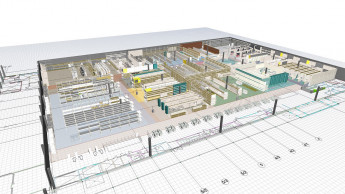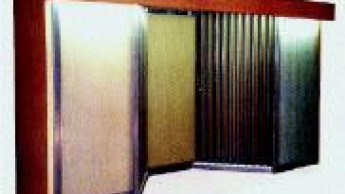As a pioneer of DIY megastores with garden centers, HORNBACH is now one of the five largest suppliers in Europe. The family-run company operates 171 DIY megastores with garden centers in nine countries, with a total of 25,000 employees across 2 mio m² of sales area. With an average of 11,900 m² of sales area per store, its distinctive product range competence and wealth of experience are intended to make HORNBACH the number one supplier for projects undertaken by both commercial and private customers.
Taking the foundation out of the old system
In order to achieve the highest possible level of sales area productivity, which amounted to 2,925 euros/m² across the company in 2022/23, the key factors include the allocation of sales areas to product groups, the type and positioning of merchandise supports, and the optimal placement of individual articles in the stores. "Local conditions at the individual stores, regional and company-wide articles, and central experience in terms of handling volumes, shopper behavior, and product placement all have to be taken into account," reports Andre Hoffmann, project manager for store format development at Hornbach. He has been familiar with the operational business in the stores as well as central planning for many years and heads the central team that creates and updates the planograms. For 16 years, the company used a modular system for this purpose that was developed and maintained by the IT department based on Lotus Notes. In August 2020, it became clear that Lotus Notes had a limited future: In October 2022, the license expired.
Accelerated selection process
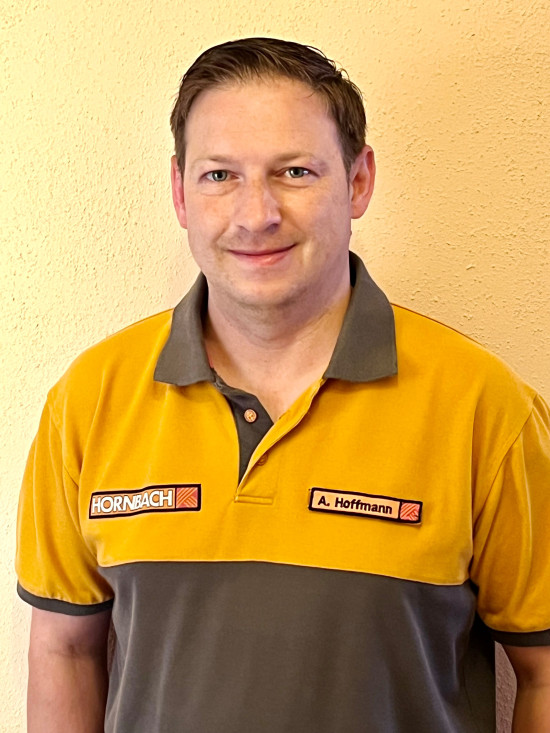
"We didn't have the time to prepare specifications and a comprehensive tender," says Andre Hoffmann, who led the selection and implementation project. "However, we knew some relevant systems and had contacts with vendors." Four weeks of sourcing and contacting were enough to attract seven interested vendors. But after a detailed presentation of the requirements, only three vendors were confident that their software would meet them, and they moved on to the next round: starting in December 2020, demo installations of the vendors were examined against a test description. "Perspectix offered workshops for this purpose and demonstrated how to use the P'X Retail Solution on the basis of five topic blocks," Hoffmann reports. "In eight weeks, the project team was able to get a picture of which standard software would best suit HORNBACH without major changes."
Decision in favour of P'X Retail Solution
As a modular software, the P'X Retail Solution covers store and fixture planning, assortment planning and evaluation, and also the implementation of sales promotions - much more than the project requires. The software visualizes planograms with articles in the 3D environment of the respective store. During planning, the solution carries assortment values such as square meters, number of articles or floor running meters and provides initial quantities for merchandise supports. "Our 2D drawings with a low level of detail always left questions unanswered," says Andre Hofmann. "In the 3D planograms from Perspectix, you can simply zoom in and get an overview of entire stores at the same time." This went far beyond the project goal of returning to the previous functional scope. "The planograms are relatively easy to create and maintain," says Andre Hoffmann. "The intuitive user interface makes it easy to get started and saves valuable time." In January 2021, written evaluation forms from the project team resulted in a clear decision for Perspectix, which had already become apparent in the workshops. This additionally included an innovative solution for communication between central planning and local stores: Perspectix's web-based Store Communicator provides plans, documents and digital twins of the stores in protected web spaces. A final reason for the decision, outside of the software, was that Perspectix was able to confirm the tight deadline for project completion, which was later met.
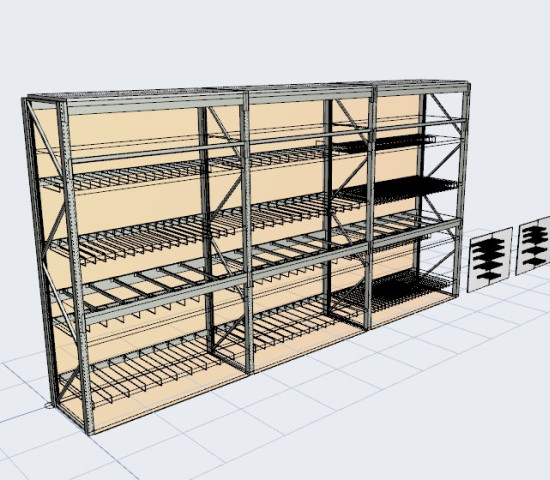
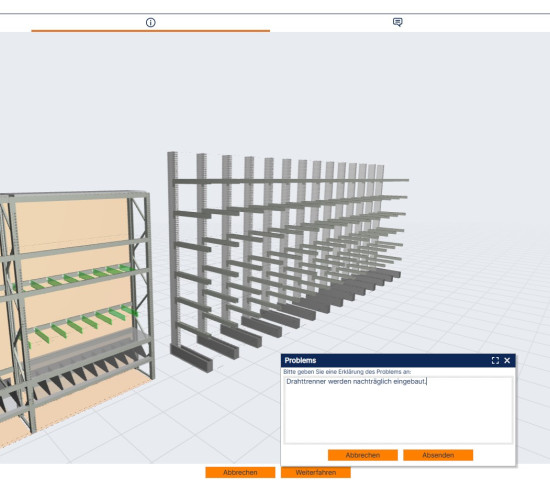
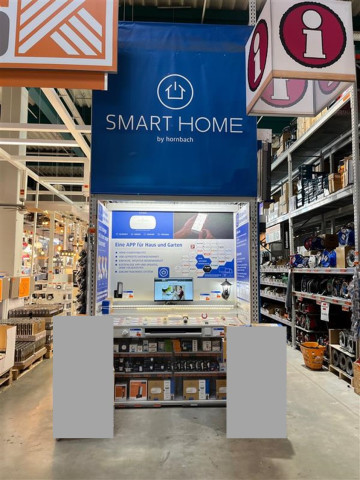
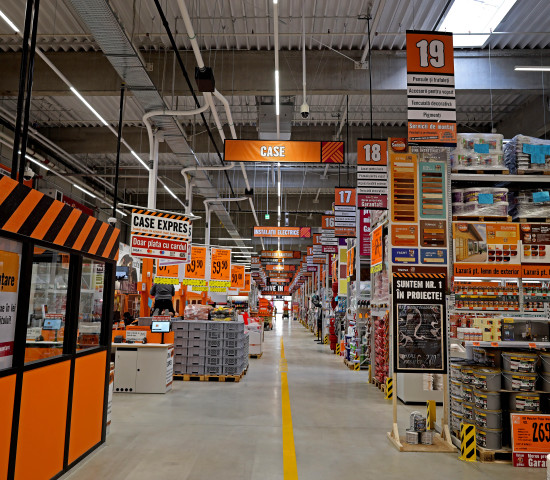
Successful migration project
In order not to lose any time, the company was already looking for a way to migrate the more than 10,000 existing planograms from the legacy system as quickly and loss-free as possible. Perspectix created a script with which the information read out could be imported without loss after several adjustment phases. In the process, the 2D data was even supplemented by the third dimension. In workshops on the approximately 1,200 shelf components, the project team explained the functionality of the systems, possible combinations and connections, so that Perspectix was able to enter most of the merchandise supports, including their logic, three-dimensionally into the Retail Solution catalogs. "Suddenly, we had all the planograms available in 3D without errors," says a delighted Andre Hoffmann. "A manual rebuild would have required enormous manpower from us." The floor plans of the DIY megastores with garden centers were drawn using ArchiCAD, a CAD and Building Information Modeling (BIM) software used by all construction trades and external service providers at HORNBACH. These plans were also migrated. Perspectix created each individual store and linked the plans to it. With a final migration run in April 2022, the essential foundations of the three-dimensional planning environment were thus ready for use.
Interfaces for the data hub
However, architects, building services engineers and other CAD users were to be given access to the module planning - with the detailed planning then being carried out again in the P'X-Retail Solution. "We wanted to save ourselves different data statuses as well as duplicate work," reports Andre Hoffmann. A bidirectional interface from Perspectix to ArchiCAD now ensures seamless collaboration between all parties involved in the entire construction market.
Another interface to the ERP system from SAP is almost standard, because all important article data is managed there. An internal evaluation program linked to SAP has also been successfully integrated into the new data hub and now obtains information on sales areas and planogram sizes.
Customization of the Store Communicator
Perspectix's web-based Store Communicator significantly expands the user base of 3D planning basics: anyone authorized can access 3D plans for a project via web link from stationary or mobile devices, share, mark up and comment on plans and photos. Central, regional and local units thus achieve greater accuracy and efficiency in collaboration. To ensure that the dialog between store offices and headquarters functions smoothly, an authorization concept was created. The workflows were adapted to processes at Hornbach. Now central planners, buyers at headquarters and in the countries can create planograms, modify and publish them for local stores. There, those responsible recognize changes and report back results and deviations in detail. "In this way, we receive feedback from the stores that are unable to implement plans as planned, understand the reasons for this, and thus continuously increase the quality of planning," Andre Hoffmann reports.
First results
The go-live was executed on time in November 2022, and more than 3,000 users are now working with the P'X Retail Solution, which has been installed at around 1,200 relevant workstations in Europe. "With the exception of one face-to-face appointment, the completely digital collaboration with Perspectix has worked extremely well," says Andre Hofmann. "Perspectix fulfilled all the commitments made in the bidding process and kept to schedule and budget. The quality of the software implemented is very good." Although staff are still in the learning phase, the new environment has been very well received and is showing the expected improvements in work efficiency and communication. For example, planogram changes no longer have to be physically tried out on site, photographed and documented, but can be implemented virtually and communicated web-based, in detail and interactively in 3D using Store Communicator. Feedback from individual stores via the Store Communicator allow a better data collection of the individual markets. "The new digital processes lead to higher planning quality, cost savings and time advantages in the realization of concepts, which ultimately benefits our customers," says Andre Hoffmann.
Tapping further potential
In the future, more and more employees will become increasingly familiar with the new solution. Employees' experiences are to be evaluated from the middle of the year, and wishes and new requirements prioritized in order to set up follow-up projects with Perspectix. "We have by no means exhausted all the possibilities of the Retail Solution," says Andre Hoffmann. These include, for example, more detailed planning with 3D product visualizations or the virtual setup of entire departments. "We are now better positioned in digitization and will become faster and more efficient as a result."
About Perspectix
Perspectix AG in Zurich implements sophisticated software solutions for technical sales and store planning. Since its foundation in 1996, the company has continuously developed into the leading technological solution provider for sales and project planning of products with many variants. Users of the P'X Industry Solution benefit from experience in complementary user industries: Mechanical engineering, plant engineering, electrical engineering, furnishing, store fitting, warehousing and logistics systems. The P'X Retail Solution provides users with a customized solution for store planning, product range design and store evaluation. Because of the combination of sales optimization, graphical project planning and product lifecycle management in a future-oriented technology, Perspectix is today a strategic supplier of well-known manufacturers and retail chains as well as a partner of leading IT houses.
About the HORNBACH Group
The HORNBACH Group is an independent, family-run retail group under the umbrella of HORNBACH Holding AG & Co. KGaA, which is listed on the Frankfurt Stock Exchange and represented in the SDAX. The largest subsidiary, HORNBACH Baumarkt AG, operates 171 DIY megastores with garden centers (including specialist stores) and online stores in nine European countries. The Group also includes HORNBACH Baustoff Union, a regional builders' merchant company with 39 locations in southwestern Germany and France, and HORNBACH Immobilien AG, which develops retail real estate for the Group. In the 2022/23 financial year (reporting date: February 28, 2023), the HORNBACH Group generated net sales of EUR 6.3 billion, making it one of the five largest DIY and garden retail companies in Europe. The Group has around 25,000 employees. More information at www.hornbach-holding.de
– Advertisement –

 Menü
Menü




